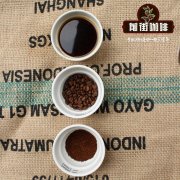Yega Snow Fruit Tintin Farmer in Ethiopia: the quality and Flavor of Hepia G1 Solar

Professional coffee knowledge exchange more coffee bean information please follow the coffee workshop (Wechat official account cafe_style)
Yejia snow caffeine originally belonged to the Ethiopia-Sidamo producing area, but because the coffee beans produced around the town were found to have unique floral and citrus flavors, they became independent of Ethiopia's well-known coffee producing areas. that's why the well-known Yejia snow coffee producing area came into being.
[fruit Ding Ding]
The raw coffee beans come from small farmers nearby who send their harvested coffee cherries to the Fruit Tintin Cooperative in Gotiti Village for processing.
The average farmer here owns less than 1 hectare of farmland. Generally speaking, a coffee farmer will plant less than 1500 coffee trees per hectare, and the amount of coffee cherries produced by a coffee tree is equivalent to about 100,200g of raw coffee beans. Also because of the small planting area of each farm, most coffee uses organic compost and less pruning branches and leaves.
The Godding Cooperative, located in the Waka producing area at the southeast end of Yega Sheffield, was originally part of the Waka Cooperative under the YCFCU of the Yega Sheffield Alliance.
But later, with the pursuit of traceability of raw coffee beans, independent "single producing areas" were excavated by coffee hunters all over the world, so in 2012, Guoding Ding, which has about 300 farmers, was independently established.
Guodingding Village was the first independent village area, and many small farmers were also members of the Waka Cooperative, so the technology of producing coffee was not to mention.
Farmers carefully select the complete mature coffee cherry fruit when harvesting, send it to the treatment plant and spread it directly on the African scaffolding for 2-3 weeks.
During the sun treatment, someone will pick out the unripe berries and rely on experienced workers to turn the coffee fruit regularly to avoid damage to the flavor of raw beans during drying. The selection of breathable mesh cloth on the scaffolding and the thickness of exposure berries are also quite fastidious. After the sun drying is completed, remove the dried pulp and sheep skin, store the raw beans in the warehouse and export them after the moisture content is reduced to 11-12%.
Yegashev Gottin Farmer, Ethiopia: Hepia G1 Solar Ethiopia Yirgacheffe Gotiti Birkinesh Hirbaye G1 Natural
Country: Ethiopia: Gotiti, Gedeb, Yirgacheffe: 1900-2100 m above sea level
Treatment: sun rating: G1 varieties: original species (Heirloom) Flavor description: plums, tropical fruits, melons and fruits, grape juice, juicy, rich layers, with black tea aroma in the end.
Hebiya, a small farmer in Yegashev, Jettip and Guodintin, produces about 14000 kilograms of raw coffee beans a year. The soil in this area is rich reddish brown soil and has "Enset", a common food crop in Ethiopia, as shade and improve soil fertility.
In the process of harvest, only the fully ripe red cherries are harvested. After picking out the low-density coffee cherries in the sink, put them on the scaffolding and turn them regularly, which will cover the coffee cherries at night until they are completely dry. In order to stabilize price fluctuations and increase market demand, Herbiya aims to expand coffee farms, improve management and improve coffee quality.
Important Notice :
前街咖啡 FrontStreet Coffee has moved to new addredd:
FrontStreet Coffee Address: 315,Donghua East Road,GuangZhou
Tel:020 38364473
- Prev

Brief introduction of Yegashev Edido small Farmer in Ethiopia: taste and Flavor of Duluo G1 Sun
For more information on coffee beans, please follow the coffee workshop (Wechat official account cafe_style). Anyone who has a general understanding of the history of coffee knows that Ethiopia is not only the birthplace of coffee, but also a shrine in the eyes of bean hunters and a treasure trove of coffee genes. among the tens of millions of coffee tree species born in Ethiopia, only "Typica" and "Bourb" are the only ones.
- Next

What varieties of Brazilian coffee beans do you recommend? Yield, flavor and taste characteristics of Brazilian boutique coffee beans
Professional coffee knowledge exchange more coffee bean information please follow the coffee workshop (Wechat official account cafe_style) Brazil is the world's largest coffee producer accounts for about 30% of coffee production, but because Brazil is located in the tropical rain forest, the terrain is relatively flat with few high-altitude mountain forests, most coffee is grown in
Related
- Detailed explanation of Jadeite planting Land in Panamanian Jadeite Manor introduction to the grading system of Jadeite competitive bidding, Red bid, Green bid and Rose Summer
- Story of Coffee planting in Brenka region of Costa Rica Stonehenge Manor anaerobic heavy honey treatment of flavor mouth
- What's on the barrel of Blue Mountain Coffee beans?
- Can American coffee also pull flowers? How to use hot American style to pull out a good-looking pattern?
- Can you make a cold extract with coffee beans? What is the right proportion for cold-extracted coffee formula?
- Indonesian PWN Gold Mandrine Coffee Origin Features Flavor How to Chong? Mandolin coffee is American.
- A brief introduction to the flavor characteristics of Brazilian yellow bourbon coffee beans
- What is the effect of different water quality on the flavor of cold-extracted coffee? What kind of water is best for brewing coffee?
- Why do you think of Rose Summer whenever you mention Panamanian coffee?
- Introduction to the characteristics of authentic blue mountain coffee bean producing areas? What is the CIB Coffee Authority in Jamaica?

